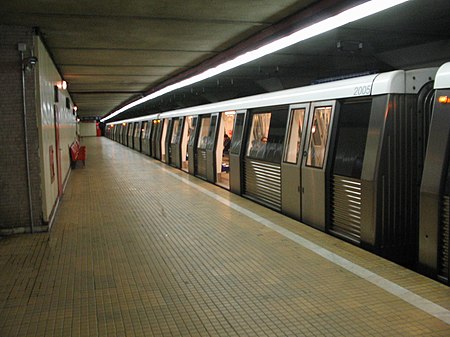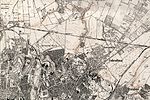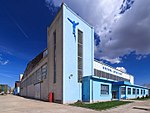Pipera metro station
1987 establishments in RomaniaBucharest Metro stationsEuropean rapid transit stubsRailway stations opened in 1987Romania transport stubs ... and 1 more
Romanian railway station stubs

Pipera is a metro station in Bucharest, located in the Pipera district. Opened on 24 October 1987 as part of the M2 extension from Piața Unirii, it is the northern terminus of the line.The initial scope of the station was to serve the large Pipera industrial estate. Since the end of industry in Romania however, the station is now used by the new business and residential estates established here. RATB tram lines 16 and 36 stop outside the station building. Night bus N125 also stops here.
Excerpt from the Wikipedia article Pipera metro station (License: CC BY-SA 3.0, Authors, Images).Pipera metro station
Bulevardul Dimitrie Pompeiu, Bucharest
Geographical coordinates (GPS) Address External links Nearby Places Show on map
Geographical coordinates (GPS)
| Latitude | Longitude |
|---|---|
| N 44.4806 ° | E 26.1165 ° |
Address
Pipera
Bulevardul Dimitrie Pompeiu
020337 Bucharest (Sector 2)
Romania
Open on Google Maps





